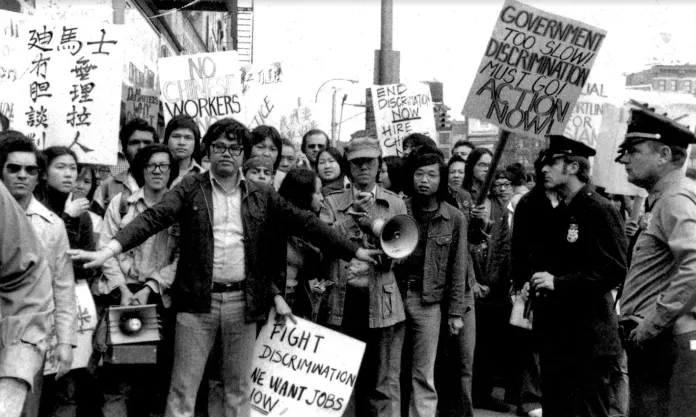The Asian American Movement

This movement is likely the least publicly discussed topic out of all of the groups and events discussed in this Libguide, though it is just as important. The Asian American Movement, or more popularly referred to simply as the "Movement" began in the late 1960s, and began the fight for equal rights for Asian Americans (Wei, 1993). This movement is an important one to cover, both because it is one of the least well known topics present in this Libguide, but also because it is relevant to the hate that the Asian population has been receiving in the last couple of years. Talking about this movement will ensure that the efforts of those who started the movement will not be forgotten, and the pain that Asian Americans were put through to receive equal rights will be understood.
The Movement arose in the late 1960s due to two factors: public outrage about the Vietnam War, and many members of the Asian American population becoming college aged (Wei, 1993). While the Movement grew out of Asian Americans protesting the Vietnam War, it became a movement that worked to expose the inequality and discrimination present within the United States, working both for their community, as well as others, to get equal rights. This transition to fighting for equal rights arose out of their fighting alongside the black population during their own fight for equality, and the realization that just like the black population, the Asian American population also experienced discrimination, institutionalized racism, and exclusion from mainstream society (Wei, 1993).
The lack of knowledge about the Movement was mainly due to its lack of a nationally known leader, but nonetheless, that did not impair the Movements ability to make strides for the Asian American community (Wei, 1993). Despite the small size of the Asian American community, they still fought for equality for their community, and in the end produced many groups that fought for equality. These groups included the Asian American Political Alliance (AAPA), which was influenced by the Black Panther movement, and supported all Asian American and non-white liberation groups and movements. They also included the American Citizens for Justice (ACJ) and the Yellow Power groups. The ACJ was formed to prevent violence against Asian Americans, while Yellow Power was formed to teach about economic power and the power of voting (Wei, 1993).
Collections Detailing the Asian American Movement
Steve Louise Asian American Movement Collection (1805), Library Special Collections, University of California Los Angeles, Los Angeles, California.
The Steve Louise Asian American Movement Collection consists of materials created and collected by Steve Louise, an Asian-American activist who participated in the Movement. Louie left college to work full-time as an organizer for the Movement, and help to organize Asian-American Studies programs for multiple colleges and universities. This collection includes materials such as newspapers, posters, buttons, and subject files.
Asian American and Pacific Islander Collection, American Archive of Public Broadcasting, Library of Congress, Culpeper, Virginia.
The Asian American and Pacific Islander (AAPI) Collection consists of over 230 radio and television programs that discuss Asian American and Pacific Islander life in the United States. This collection covers the Movement, as well as other topics. The radio and television programs cover topics including affirmative action, hate crimes against the community, and the internment of Japanese individuals.
East West Research Files (AAS ARC 2000/8), Ethnic Studies Library, University of California Berkeley, Berkeley, California.
The East West Research Files consists of research materials associated with the East West newspaper. This newspaper covered political, social, cultural, and community struggles the Asian American community experienced from 1967 to 1989. This includes photographs, both black and white and from magazines, as well as newspaper clippings.